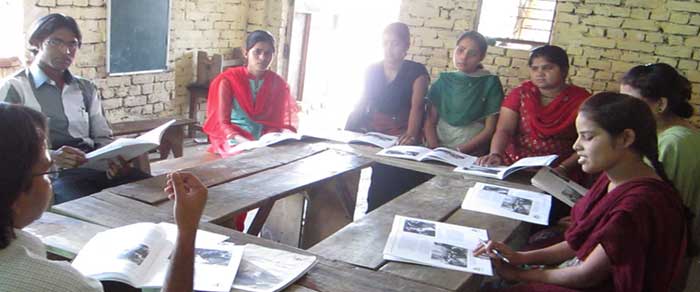A majority of cases of blindness occurs during infancy and childhood. It is, however, reassuring that about two-third cases of blindness in India are curable, if detected and treated early. Blindness in children is often preventable if communities and parents become aware of the causes. Without early intervention for cataract blindness children may go blind permanently. Eliminating childhood blindness will lead to a greater reduction in the number of ‘blind years’ experienced by adults.
Childhood blindness:
The vast majority of childhood blindness happens before the age of five – a period when 75 per cent of learning is through sight. Health experts estimate that India has about 9.3 million visually impaired and 2,70,000 blind children in India have severe visual impairment or blindness and approximately 15000 are in schools for the blind. Approximately 50 % of all childhood blindness in India is preventable or treatable.
Why A Priority……
- Blindness in children is often preventable if communities and parents become aware of the causes
- Without early intervention for cataract blindness children may go blind permanently
- Blinding conditions increase child mortality – 50 per cent of children who become blind die within two years
- 90 per cent of children who are blind don’t go to school
- Eliminating childhood blindness will lead to a greater reduction in the number of ‘blind years’ experienced by adults.
Childhood blindness kills and should be treated as an emergency
- 89% of childhood blindness occurs before the age of 5
- 90% of blind children have some residual vision
- 75% of learning in the first five years of life is through sight.
What were the main reasons
- The main causes of childhood blindness in India are visual impairment due to uncorrected refractive errors, vitamin A deficiency, developmental cataract, retinal conditions, optic atrophy and congenital anomalies of the globe.
- 50% of this blindness is preventable or treatable, but there is a huge lack of trained paediatric ophthalmic professionals as well as essential equipment.
Need …
A child is not a small adult and a children’s eye care programme is not a small adult eye care programme.
- Children are a population that does not recognise that they have a problem – they have to be found. Parents are at the core of intervention with children
- There is a need for paediatric oriented ophthalmology
- There needs to be a comprehensive, multi-sectoral and integrated approach to programming to control childhood blindness
Need of the hour…
It is sad that India has the largest number of blind people in the world, excepting some other developing countries. A majority of cases of blindness occurs during infancy and childhood. It is, however, reassuring that about two-third cases of blindness in India are curable, if detected and treated early.
India is facing an acute shortage of eye specialists. Hence, emphasis has to be given on such aspects as how best to increase manpower and eye care facilities to control the eye diseases in different age-groups.
As children below the age of 15 constitute about 40 per cent of our total population and a vast majority of them are now attending schools, there is an imperative need to concentrate on this group to detect eye ailments. They could be examined for all possible defects in vision and provided timely medical help to reduce the incidence of preventable blindness. Failing this the eye defects and eye diseases in school children might take an irreversible turn leading to partial or total blindness. Detection and treatment of ailment in time, on the other hand, will help the children maintain normal eyesight.
In India, there is a provision of eye health in government elementary education system. However, it is important to point out here that there is no direct interaction with children on eye care in the schools in existing government education system except some check-ups and treatments on their eye health. There is a lack of interactive and participatory approach to teach the children on eye care in interesting and pragmatic way, so, a mechanism is needed to be placed which is not only build the capacity of the teachers but effectively involves the children in the learning process through a interactive and participatory methods in order to make them aware and sensitise on eye care, visually impairment, blindness and eye related preventive diseases.

